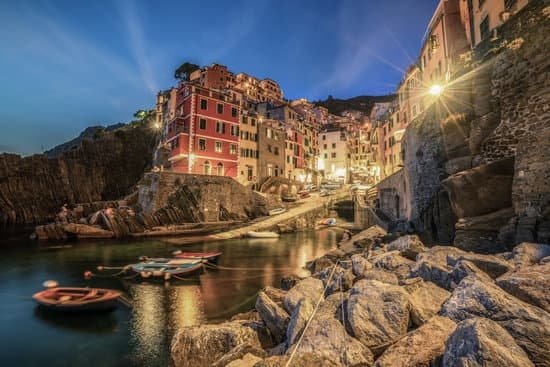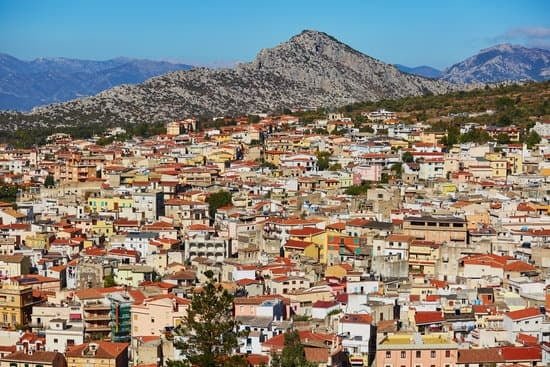Italy is a dream destination for travelers around the world, known for its stunning landscapes, rich history, and delectable cuisine. In this blog post, we will provide essential travel tips for visiting Italy, helping you make the most out of your trip to this beautiful country.
As one of the top tourist destinations in Europe, Italy attracts millions of visitors each year. Whether you’re planning to explore the ancient ruins of Rome, soak in the serene beauty of Tuscany, or indulge in the vibrant culture of Naples, it’s important to be well-prepared for your Italian adventure. This blog post aims to equip you with the knowledge and tips you need to navigate through Italy and fully enjoy all it has to offer.
From the best time to visit Italy and essential packing items to cultural etiquette and safety tips, we’ve got you covered. Whether you’re a seasoned traveler or embarking on your first international trip, our comprehensive guide will help ensure a smooth and unforgettable experience as you explore the beauty of Italy. So pack your bags and get ready to immerse yourself in all that Italy has to offer.
Best Time to Visit Italy
When planning a trip to Italy, it’s important to consider the best time to visit in order to make the most of your experience. The peak tourist season in Italy typically runs from April to October, with July and August being the busiest months.
During this time, you can expect warm weather, crowded tourist attractions, and higher prices for accommodations and flights. If you prefer a more relaxed and budget-friendly experience, it may be best to avoid visiting during these months.
On the other hand, visiting Italy in the shoulder seasons of spring (April to June) and fall (September to October) can offer milder weather, fewer crowds, and more affordable travel options. These times also allow for experiencing special events and festivals such as Easter celebrations, the Venice Biennale (an art exhibition), or truffle festivals in Piedmont.
Depending on your interests and tolerance for crowds, you may also consider visiting Italy during the winter months. While some areas may be quieter during this time, cities like Rome and Florence still attract tourists who want to experience Christmas markets, holiday decorations, and seasonal traditions.
Plus, skiing in the Italian Alps or enjoying carnival celebrations in Venice are unique winter experiences that may appeal to travelers looking for something different. Ultimately, the best time to visit Italy will depend on your preferences for weather, crowd levels, and available activities during your trip.
Packing Essentials for Italy
Italy is a country known for its diverse landscapes, rich history, and vibrant culture. When planning a trip to Italy, it’s essential to pack wisely in order to fully enjoy everything the country has to offer. Here are some packing essentials to consider when visiting Italy:
- Clothing: Italy’s climate varies depending on the region, so it’s important to pack clothing suitable for different weather conditions. Lightweight and breathable clothing is essential during the summer months, especially in southern regions like Sicily. However, if you plan on visiting the northern parts of Italy or during the winter months, be sure to bring layers such as sweaters and jackets.
- Footwear: Comfortable walking shoes are a must for exploring Italy’s cities and historical sites. You’ll likely be doing a lot of walking on uneven cobblestone streets, so choose footwear that offers both comfort and support.
- Travel Adapters: Italy uses a unique type of electrical outlet (Type L), so make sure to pack the appropriate travel adapters for your electronics.
- Other Essentials: In addition to these essentials, consider bringing items such as sunscreen, sunglasses, a hat for sun protection, and a reusable water bottle for staying hydrated while sightseeing.
By packing thoughtfully and being prepared with the right essentials, you can ensure that your trip to Italy is comfortable and enjoyable.
| Essential Items | Tips |
|---|---|
| Clothing | Pack lightweight and breathable clothing for summer months |
| Footwear | Comfortable walking shoes are essential |
| Travel Adapters | Pack Type L travel adapters for electronics use in Italy |
Navigating Transportation in Italy
When traveling to Italy, it’s essential to understand the various transportation options available for getting around the country. From public transportation to renting a car, there are several ways to navigate Italy’s cities and regions. Here are some tips for navigating transportation in Italy:
- Public Transportation: Italy has an extensive public transportation system, including buses, trams, and subways in major cities. In places like Rome and Milan, using public transit is often the most efficient way to get around. Be sure to familiarize yourself with the different ticket options and how to use them before heading out.
- Renting a Car: For those looking to explore more rural or remote areas of Italy, renting a car can be a convenient option. Keep in mind that driving in Italian cities can be challenging due to traffic congestion and limited parking. Additionally, some areas have restricted traffic zones where only authorized vehicles are allowed.
- Railway System: Italy’s railway network is well-developed and offers high-speed train options between major cities. Travelers can purchase individual tickets or consider rail passes for multi-city itineraries. It’s important to familiarize yourself with train schedules and possible strikes that may affect travel plans.
Understanding the various transportation options in Italy can help travelers make the most of their trip while experiencing the convenience and efficiency of getting around the country.
Whether you’re visiting iconic landmarks like the Colosseum in Rome or exploring the picturesque Amalfi Coast, knowing how to navigate transportation in Italy is key to enjoying all that this beautiful country has to offer.
Before embarking on your Italian adventure, take time to research and plan out your transportation needs based on your itinerary and preferred travel style. With these tips in mind, you’ll be well-prepared for getting around Italy with ease and making the most of your travel experience.
Top Destinations and Attractions in Italy
Italy is a country filled with rich history, stunning landscapes, and vibrant cultural experiences. From the iconic canals of Venice to the ancient ruins of Rome, there are countless attractions that draw visitors from all over the world. When visiting Italy, be sure to include these top destinations and attractions on your itinerary:
- Rome: The capital city of Italy is teeming with history and iconic landmarks such as the Colosseum, Roman Forum, and Vatican City. Don’t miss the opportunity to explore the ancient ruins and marvel at the art and architecture that has shaped Western civilization.
- Florence: Known as the birthplace of the Renaissance, Florence is a treasure trove of art, culture, and culinary delights. Visit the Uffizi Gallery to see works by Michelangelo and Da Vinci, stroll across the Ponte Vecchio bridge, and take in panoramic views from Piazzale Michelangelo.
- Venice: This enchanting city built on water is famous for its picturesque canals, historic palaces, and romantic gondola rides. Wander through St. Mark’s Square, visit the grand Doge’s Palace, and immerse yourself in Venetian culture at local cafes and markets.
In addition to these iconic cities, Italy is also home to breathtaking natural landscapes such as the Amalfi Coast, Cinque Terre, and Lake Como. Whether you’re interested in historical sites, artistic masterpieces, or scenic beauty, there’s something for every traveler in Italy. Be sure to plan your itinerary carefully to make the most of your time in this remarkable country.
When visiting popular attractions in Italy, it’s important to be mindful of large crowds and long lines-especially during peak tourist season. Consider booking tickets in advance for museums and landmarks to avoid waiting in line. With a bit of planning and flexibility, you can enjoy an unforgettable experience exploring some of Italy’s most renowned destinations.
Cultural Etiquette in Italy
When traveling to Italy, it’s important to familiarize yourself with the cultural etiquette of the country. Understanding Italian customs, social norms, and language tips can enhance your experience and help you navigate your interactions with locals more smoothly.
Language Tips
While many Italians speak English, especially in tourist areas, it’s always appreciated when visitors make an effort to speak basic Italian phrases. Learning simple greetings, pleasantries, and how to ask for directions in Italian can go a long way in showing respect for the local culture. Consider investing in a phrasebook or language app to help you communicate more effectively during your trip.
Dress Code and Appearance
Italians are known for their strong sense of style and fashion. When visiting churches, museums, or upscale restaurants, it’s important to dress modestly and avoid wearing beachwear or revealing clothing. Additionally, it’s customary to remove hats when entering religious sites as a sign of respect.
Social Interactions
Italians are warm and sociable people who value personal connections. When meeting someone for the first time, it’s polite to shake hands, make eye contact, and use formal titles such as “signore” (Mr.) or “signora” (Mrs.) until invited to use first names. Maintaining good manners during social interactions is highly valued in Italian culture.
By familiarizing yourself with these cultural etiquette tips for traveling in Italy, you’ll be better prepared to engage with locals respectfully and immerse yourself in the beauty of Italian traditions and customs. Embracing the cultural nuances of Italy can truly enrich your travel experience and create lasting memories from your trip.
Dining and Food Tips
When visiting Italy, one of the highlights of the trip is undoubtedly trying authentic Italian cuisine. From pizza and pasta to gelato and espresso, there are so many delicious food options to explore. Here are some dining and food tips to help you make the most of your culinary experience in Italy.
Trying Authentic Italian Cuisine
One of the best parts of visiting Italy is getting to try authentic Italian cuisine. Be sure to sample regional specialties, such as Neapolitan pizza in Naples or Florentine steak in Tuscany. Don’t be afraid to step out of your comfort zone and try something new – you might discover a new favorite dish.
Dining Out Etiquette
When dining out in Italy, it’s important to be aware of local dining etiquette. Italians typically eat dinner later in the evening compared to other countries, with many restaurants not opening for dinner until 7 or 8 p.m. Additionally, it’s customary to linger over meals and not rush through your dining experience.
Navigating Menu Options
Many traditional Italian restaurants offer a multi-course meal structure, including antipasti (appetizers), primi piatti (first courses like pasta or risotto), secondi piatti (main courses), contorni (side dishes), and dolci (desserts). It’s common for Italians to enjoy all these courses during a meal, but it’s perfectly acceptable for tourists to choose just one or two if they prefer.
Also be aware that tipping at restaurants is not as common in Italy as it is in some other countries – a service charge may already be included in your bill.
Safety and Security Tips
Italy is generally a safe country for travelers, but it’s always important to be aware of your surroundings and take precautions to ensure your safety and security. One of the most common issues that travelers face in Italy is pickpocketing, especially in crowded tourist areas.
To avoid falling victim to pickpockets, it’s essential to keep your belongings secure and be wary of anyone acting suspiciously around you. In addition, it’s recommended to carry a money belt or anti-theft purse to keep your valuables safe.
It’s also important to be mindful of any potential scams while traveling in Italy. Common scams include individuals posing as police officers asking for your documents or claiming to offer assistance with currency exchange. It’s crucial to be cautious when approached by strangers and never hand over your passport or other important documents to anyone unless you are certain they are an official authority figure.
In case of emergency situations while in Italy, it’s helpful to have a list of important contacts readily available. This should include the contact information for local emergency services, such as the police (Carabinieri), ambulance (ambulanza), and fire department (vigili del fuoco). Additionally, having the contact details for your country’s embassy or consulate in Italy can provide valuable support if you encounter any legal or safety issues during your travels.
| Safety Tips | Additional Considerations |
|---|---|
| Be cautious of pickpockets, especially in crowded tourist areas | Carry a money belt or anti-theft purse |
| Stay aware of potential scams involving fake authorities | Never hand over important documents unless certain of their authenticity |
| Maintain a list of emergency contacts handy | Contact information for local emergency services and embassy/consulate |
Conclusion
In conclusion, visiting Italy can be an incredible and unforgettable experience, and with the right preparation and knowledge, travelers can make the most out of their trip. By following the travel tips provided in this article, including the best time to visit, packing essentials, navigating transportation, understanding cultural etiquette, dining and food tips, and staying safe and secure, travelers can ensure a smooth and enjoyable visit to Italy.
It is important for visitors to embrace the rich culture and history of Italy while also being respectful of local customs. Learning a few key Italian phrases, understanding table manners, and being mindful of dress codes when visiting religious sites can greatly enhance the experience. Additionally, trying authentic Italian cuisine at local establishments can provide a deeper immersion into the country’s vibrant culinary traditions.
By prioritizing safety and security throughout the trip, travelers can focus on enjoying all that Italy has to offer without unnecessary worries. Being aware of common scams, keeping valuable belongings secure, and knowing emergency contacts are essential for a hassle-free journey. With these travel tips in mind, visitors to Italy can create lasting memories of their time exploring this beautiful and diverse country.
Frequently Asked Questions
What do I need to do before Travelling to Italy?
Before traveling to Italy, it is important to make sure your passport is up to date and will be valid for at least six months beyond your planned departure date. Additionally, you may need to obtain a visa depending on the purpose and length of your stay in Italy.
It’s also a good idea to familiarize yourself with Italian customs and etiquette, as well as learning some basic Italian phrases to help you communicate with locals.
How do I prepare for my first trip to Italy?
When preparing for your first trip to Italy, it’s essential to research the places you want to visit and create an itinerary that includes must-see attractions as well as some off-the-beaten-path gems. Familiarizing yourself with Italian cuisine will also enhance your experience – try looking up popular dishes from different regions so you know what delicacies to try when you get there.
Finally, packing light and comfortable clothing is advisable, especially if you plan on doing a lot of walking.
What do US citizens need to travel to Italy?
US citizens traveling to Italy need a valid passport but do not require a visa for stays of up to 90 days within a 180-day period for tourism or business purposes. However, if you plan on staying longer or have other specific purposes for your trip such as working or studying in Italy, additional documentation or visas may be required.
It’s always best to check the latest travel advisories and entry requirements from the US Department of State before planning your trip.

I’m a passionate traveler, writer, and Italophile. My fascination with Italy’s history, art, and culture has led me on countless adventures across the Italian landscape. Through “I Live Italy,” I share my love for this extraordinary country and aims to inspire others to explore its boundless beauty.




